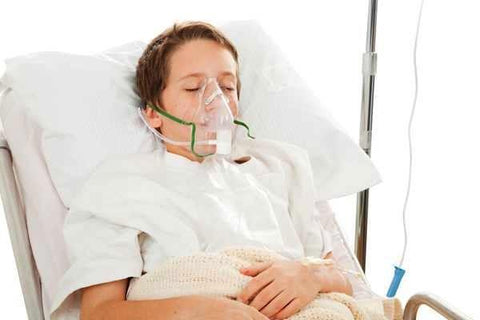Carbon monoxide poisoning is a serious condition that can occur when you breathe in carbon monoxide (CO) gas. CO is a colorless, odorless gas that can build up quickly in closed spaces. It can cause severe illness and death. If you think you have been exposed to carbon monoxide, get out of the area and call 911 or your local emergency number immediately.
Measures after carbon monoxide poisoning
Observe symptoms
If you are exposed to CO gas for a long period of time, you can suffer from serious health problems. In some cases, carbon monoxide poisoning can be deadly. Get to fresh air and seek medical attention if you are experiencing any of the below symptoms.
- Headache
- Dizziness
- Nausea
- Vomiting
- Chest pain
- Shortness of breath
- Fatigue
- Weakness

Immediately move to fresh air
When you have any of the above situations, take advantage of the fact that the CO concentration is not very high and you still have a sense of action, quickly move to the outdoor, so as to avoid inhaling high concentrations of carbon monoxide in a closed environment, which will lead to bad conditions.
Call 911
Even if you have moved outside, it does not mean that you are safe enough, you should immediately call 911 and related person. On the one hand, it can reduce the risk of damage to the house and other properties, and on the other hand, seek help for others, there will be surrounding neighbors that are also affected by subtle carbon monoxide concentrations.Before waiting for the ambulance and related personnel to arrive, it is best to stay where you are, to avoid being unconscious while driving alone and causing a car accident, etc.

Services you may experience in the hospital
Pure oxygen breathing
Due to the presence of carbon monoxide in the body, carbon monoxide is easily combined with hemoglobin to prevent the delivery of oxygen, resulting in hypoxia, coma and even death. Therefore, a ventilator will be prepared immediately after admission to reduce the concentration of carbon monoxide in the body.

Routine test
Once your symptoms have stabilized, your doctor will give you a series of routine tests, mostly to check your carbon monoxide levels. Such as blood test, urine test, electrocardiogram, etc.

Recuperate in a dedicated ward and wait for recovery
After the blood test is complete, you will be transferred to a high oxygen ward for rest. It is expected that it will take 4 hours to expel all carbon monoxide from your body, maybe longer. During this period, a doctor will monitor your condition, and you will not be discharged from the hospital until the blood test report and symptoms are stable.
How to prevent carbon monoxide poisoning
Carbon monoxide is a deadly gas that can be produced by any type of fuel-burning appliance, including cars, trucks and generators. To prevent carbon monoxide poisoning:
- Install a CO detector in your home and check it regularly to make sure it's working properly.
- Never use portable generators indoors or in close proximity to your home.
- Make sure all fuel-burning appliances are properly vented to the outside.
- Never leave a car running in an enclosed space such as a garage.
- Get your furnace and chimney inspected and cleaned annually.
- If you start to feel sick after being around a fuel-burning appliance, get out of the area and seek medical attention.

